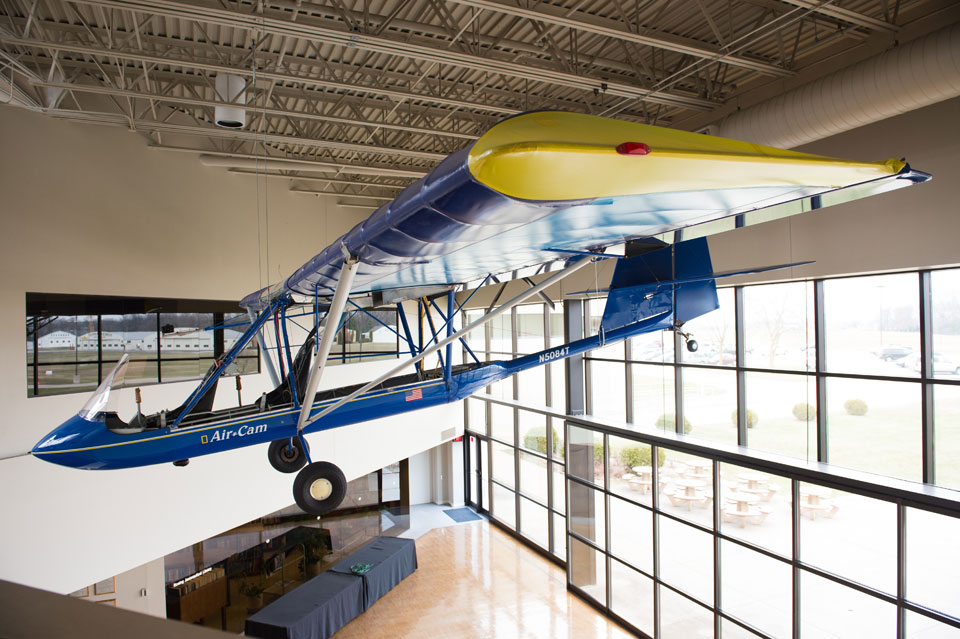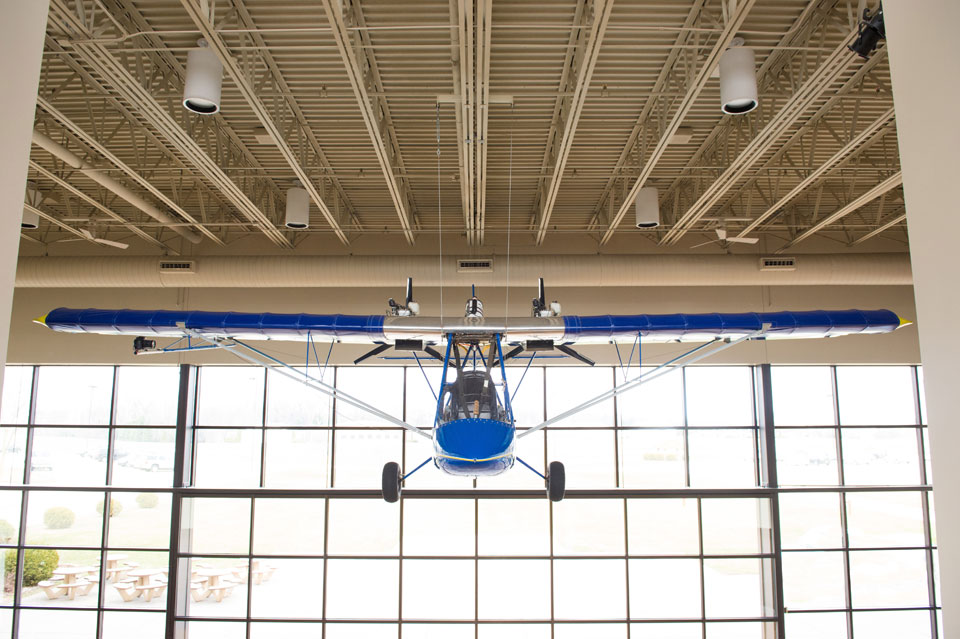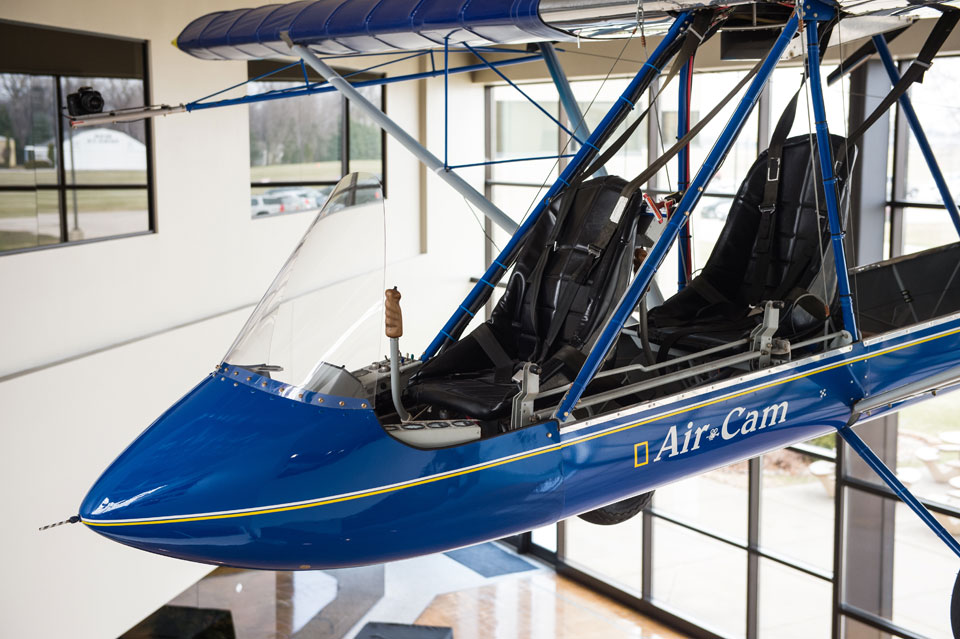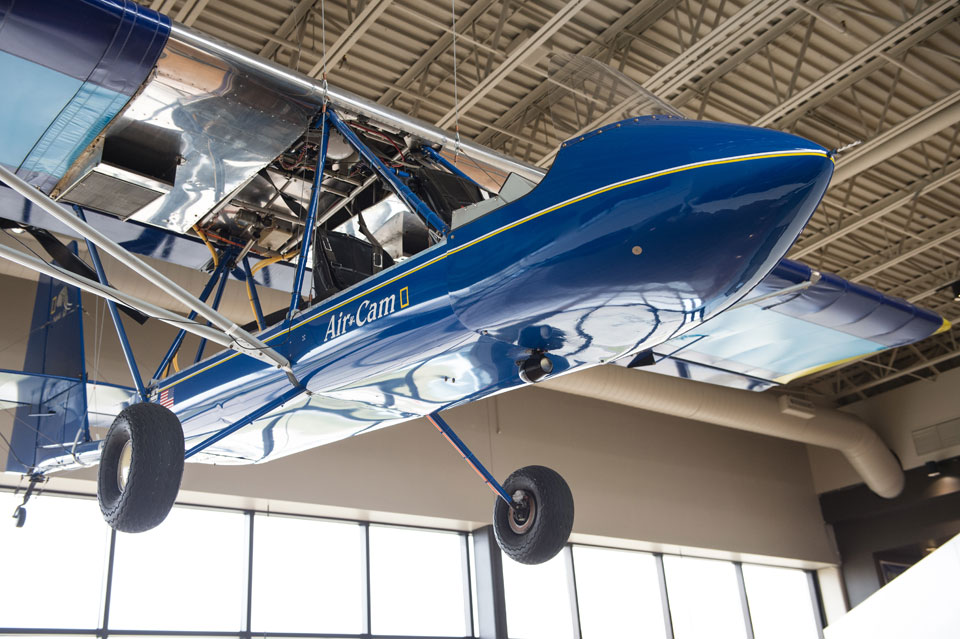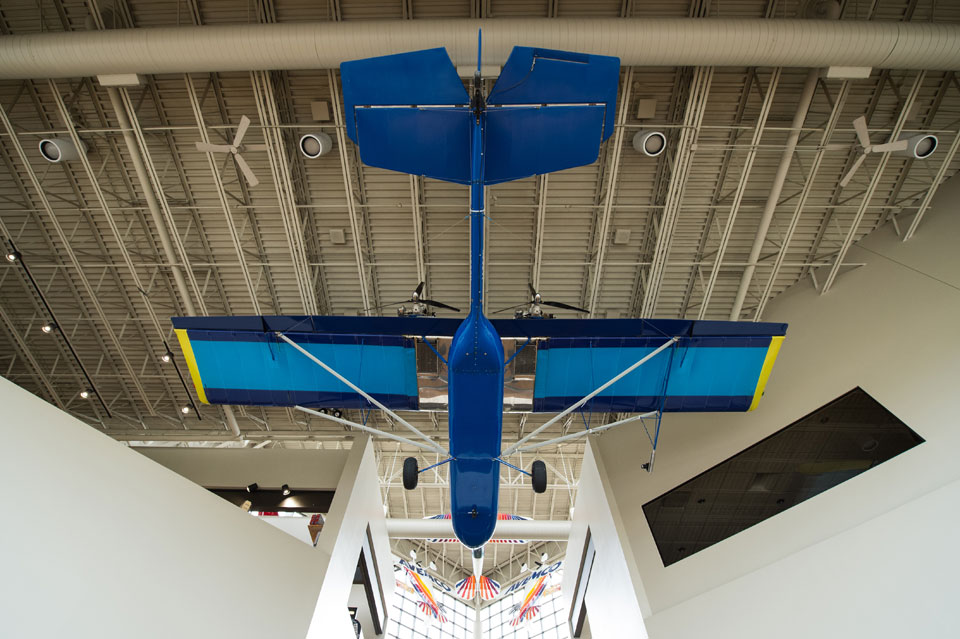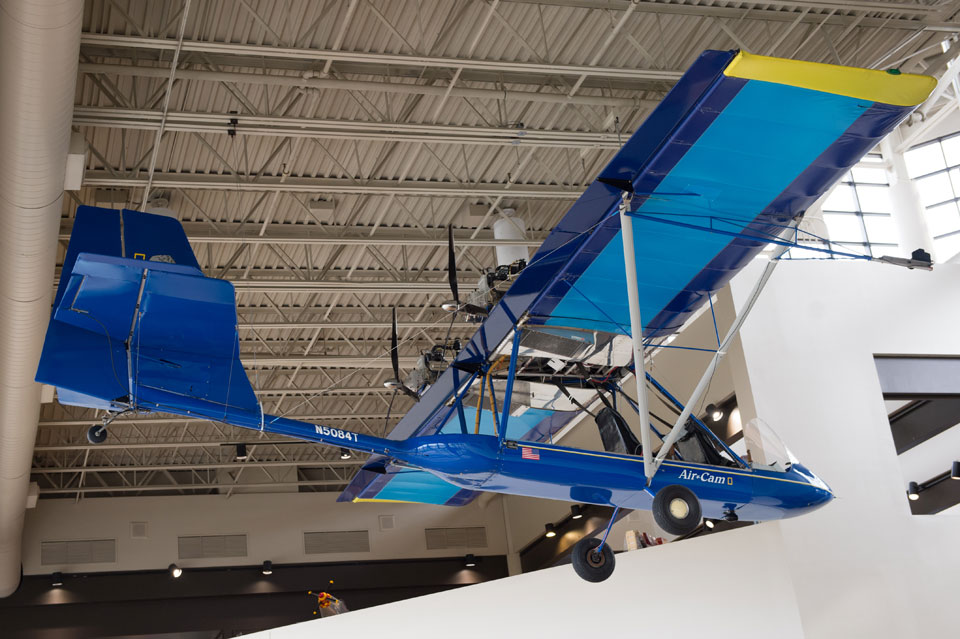2003 Lockwood AirCam - N5084T
Location: Museum Lobby
The versatile AirCam is the brainchild of Phil Lockwood. Lockwood worked for Maxair, designer of the Drifter ultralight, during the 1980s. Because of the Drifter’s open air structure, wildlife photographers Des and Jen Bartlett contacted Maxair in 1985 looking for an aircraft to use as a camera ship for photo missions over Africa. A Drifter was outfitted and sent to Africa, along with Lockwood himself, who assisted in assembly of the aircraft and also flew it for the Bartletts’ aerial photo mission as well as many others over the years.
Lockwood left Maxair in the late 1980s and established his own aviation consulting business, as well as Rotax and Drifter ultralight service centers. During this time, Lockwood began thinking about designing a better airplane for his aerial photography missions. In 1993, he was contacted by National Geographic photographer Michael Nichols about doing a photo mission over Nouabalé-Ndoki National Park in the Republic of Congo, which Lockwood at first turned down due to his concerns about safety with the single-engine Drifter. Lockwood began considering a twin-engine machine to serve as an aerial platform. Thus, the AirCam was born. By the fall of that year the first AirCam had been built and test flown. The first model featured a boom tail and was powered by two 64-hp Rotax 582 engines. The aircraft displayed impressive performance, including being able to take off on only one engine. In late 1993, the AirCam was shipped to the Republic of Congo for its first photo mission.
After the AirCam’s 1994 appearance at Sun ‘n Fun, demands were made for a production version. Investor Antonio Leza assisted Lockwood in getting the new AirCam up and running, and in early 1996, the first new Leza-Lockwood AirCam was rolled out. This new version featured a monocoque aluminum design with a steel tube gear in place of the pod and boom construction of the first two aircraft, giving the production AirCam more stability and strength. The tail was enlarged to improve stability and control at very low speeds when photographers want to linger over a certain area. The new AirCam also had its BRS parachute tucked into a specially designed box in the center section rather than mounted on top of the wing, which cleaned up the airfoil. Engines for the AirCam include the original Rotax 582, as well as the Rotax 912, 912S, and 914.
EAA’s AirCam (N5084T) is model No. 1 and was used for the National Geographic photo missions in the Republic of Congo. The AirCam proved to be a great photo platform for photographer Michael Nichols. The plane provided incredible forward visibility, and they could cover far more ground than they could on foot. The crew got up early each day and flew missions from dawn until about 8 a.m., when the good light was gone. The rest of the day was spent checking and maintaining the aircraft. Around four p.m. they would head out again until sunset. Due to the ongoing civil war and all the delays the team had encountered, they elected to store the AirCam and return to the site in the spring of 1994 to complete the photo shoot. The results of this expedition can be seen in the July 1995 issue of National Geographic.
After the second mission to the Congo in 1994, the AirCam was purchased by the National Geographic Society, which then donated it to Nouabalé-Ndoki National Park for use in research. During its service with the park, the aircraft was damaged in a landing accident.
It went unrepaired because of the remote location and the expense involved. Russ Solsvig, EAA 466754, an airline pilot, found out about the damaged AirCam and arranged to purchase it and ship it back to the United States where he completely restored the aircraft. Solsvig later traded AirCam No. 1 to Lockwood for a new AirCam. Lockwood donated No. 1 to EAA in 2008.
Aircraft Make & Model: Lockwood AirCam
Length: 27 feet
Wingspan: 36 feet
Height: 8 feet 4 inches
Gross Weight: 1,500 pounds
Empty Weight: 955 pounds
Fuel Capacity: 28 gallons
Seats: 2
Powerplants: Two Rotax 582s
Horsepower: 64 hp
Maximum Speed: 110 mph
Cruise Speed: 50-80 mph
Stall speed: 37 mph
